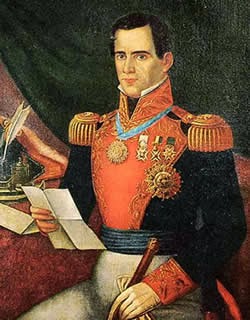 |
| Texas War of Independence and the Alamo |
Texans have long taken pride in their state’s unique history as the only state in the Union to have fought for and achieved independence as a republic. For nearly 10 years, from April 1836 to December 1845, the Republic of Texas (or Lone Star Republic) existed as a sovereign nation-state—not recognized by Mexico for its illegal secession from the Estados Unidos Mexicanos (United Mexican States), and not annexed by the United States, despite the desire for annexation among many of its Anglo-American citizens. During this decade, the sectional divisions between North and South prevented Senate agreement on admission to the Union of another slave state.
The long-term roots of the Texas War of Independence lay in the rapid expansion westward of the southern cotton and slave plantation system, especially after the widespread adoption of Eli Whitney’s cotton gin after 1793 and the Louisiana Purchase of 1803. Cotton monoculture was extremely destructive of soils, prompting slaveholding cotton growers to seek new lands to the west.
In the 1810s and 1820s many were drawn to Alabama, Mississippi, and further west to the fertile valleys of East Texas. In late 1820 Moses Austin, a leading lead mining and manufacturing entrepreneur, received permission from the Spanish government to settle 300 Anglo-American families in present-day San Antonio. He died soon after.
 |
Within the year, his son, Stephen F. Austin, secured permission for the settlement from the newly independent Mexican government. The colony’s population grew rapidly. In 1830 the roughly 10,000 Anglo-American settlers in East Texas outnumbered Mexicans by around two to one.
On September 15, 1829, the Mexican government abolished slavery throughout the republic, including the territory of Texas, but the Anglo-American colonists ignored the law. They also ignored Mexican laws mandating adherence to Roman Catholicism, and an 1830 law banning further Anglo colonization of the territory.
Tensions mounted through the early 1830s. Following a series of armed clashes in 1832, the Texas settlers held conventions in 1832 and 1833 demanding reforms from the Mexican government. The pivotal moment came with the passage of the Siete Leyes (Seven Laws) in December 1835, amending the 1824 Mexican constitution, effectively curtailing the political autonomy of states and territories, including Texas.
 |
| José Antonio López de Santa Ana |
Crossing the Río Grande, he determined to take the San Antonio de Valero Mission in San Antonio de Béxar, also known as the Alamo, garrisoned by some 180 men under William B. Travis. After a two week siege, on March 6 the Mexican army overwhelmed and killed all the defenders, most famously Travis, Jim Bowie, and Davy Crockett. “Remember the Alamo!” became the rallying cry for the Texas army.
An even more consequential military episode took place several weeks later at the small town of Goliad, where several hundred troops under Texas colonel James W. Fannin surrendered to Mexican general José Urrea. To these were added prisoners from other engagements. All were ordered shot by Santa Anna.
The infamous “Goliad Massacre” of March 27, 1836, in which an estimated 342 Texan prisoners were executed by firing squads, inflamed the passions of the Texans. A few weeks later, in the decisive engagement of the war, on the afternoon of April 21, 1836, General Houston, at the command of some 900 men, launched a surprise attack on the Mexican army encamped on the banks of the San Jacinto River. The battle was over in less than 20 minutes.
Houston later reported 630 Mexicans killed and 730 taken prisoner, with fewer than 40 Texan casualties. The next day, Santa Ana was found hiding in the brush, taken prisoner, compelled to sign two treaties effectively granting Texan independence, and sent back to Mexico City.
The Mexican government later refused to recognize Texan independence. Texas twice applied for annexation to the United States (in 1836 and 1844) but was prevented by a coalition of northern senators fearing the addition of another slave state to the Union.
Texas joined the Union as the 28th state on December 29, 1845, its foundational mythologies becoming an integral part of the expanding nation’s stock of shared stories—especially events at the Alamo—mythologies that glorified Anglo Texans’ heroism, decried the treachery of the Mexicans, and elided the contradictions of a struggle for freedom waged by men holding slaves in perpetual bondage. The state’s strong sense of nationalism endures to this day.